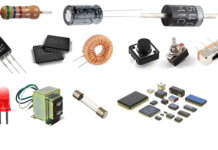
Introduction
As more consumers move toward exciting home audio experiences, from home theaters and VR experiences to “bass shaker” gaming setups and away from local cinemas, tactile transducers are becoming increasingly common in-home audio applications for producing “invisible” sound. Tactile transducers are ideal for situations where extra loud bass isn’t feasible, or a user may want to enjoy rich audio without thunderous bass but still get the “feel” of intense sound sequences.
This blog dives into concepts of audio transducers and explores their many uses in home audio.
Why should I “feel” audio anyhow?
The most common sound transducers in home audio/entertainment setups are typical audio transducers used as home speakers. This includes tweeters, mid-range, woofers, and sometimes subwoofers. Tweeters, mid-range, and woofer speakers all produce sounds that can be heard but generally don’t produce sounds that are felt. Subwoofers do a bit of both, and cover frequency ranges at power levels that can sometimes be both felt and heard. Subwoofers are used in movie theaters and music venues to create a more immersive experience. Subwoofers are just large speakers designed to be more effective at generating low frequency—typically between 20Hz and 200Hz—sound waves that can be both heard and felt.
As lower-frequency sounds travel through the atmosphere, water, and solid objects better than higher-frequency sound waves, you can generally “feel” very low-frequency sound waves even if you are far away from whatever is generating the sound. This is commonly considered a trademark of immersive experiences if you can both hear and feel the sound of the events in the entertainment, be it an augmented-reality/virtual-reality (AR/VR) experience, a movie, music, or a video game. It is also the way elephants communicate over vast distances.
Tactile Transducers for the win!
Fortunately, you don’t need an elephant in the room to have a “bass shaker” home entertainment experience. Tactile transducers, also known as bass shakers, can easily generate these sound waves or vibrations. For a speaker-style sound transducer to efficiently produce a low enough frequency to be felt and heard, the subwoofer needs to be proportional in size to the lowest frequency (i.e., longest wavelength). Reaching very low frequencies capable of vibrating the chair or sofa that a viewer or listener is seated on requires a powerful and large subwoofer in the same room. An unfortunate side-effect of subwoofers is that the very low-frequency sound waves they transmit penetrate walls and can usually be felt and heard by others nearby.
If this low-frequency rumble is not desirable, tactile transducers are another option for generating the same good vibrations. They can sometimes even replace subwoofers in some setups. The most common form of tactile transducers that have been around for over half a century is bass-shaker tactile transducers. The most common is the “shaker” variety, which uses an off-center mass attached to an electric motor and is designed so that relatively low-frequency vibrations are intentionally generated. This may “sound” familiar, as this same technology is used in video game controllers and smartphones to provide tactical vibration/rumble feedback or notification.
Taking this technology to the next level would be using an array of small shakers, or even better, a much larger shaker mounted to the support or structural portion of a seat, sofa, user-worn apparatus, or other interactive entertainment apparatus. A dedicated and larger shaker may be more desirable because it can incorporate larger motors, i.e., more powerful vibrations. A larger shaker can generally produce higher levels of lower-frequency vibrations.
This same technology is sometimes used by drummers in musical performance setups, as a shaker mounted to the bottom of a drummer’s seat can allow them to “feel” themselves playing as a form of feedback instead of trying to hear themselves and being distracted by the sounds of the audience and other musicians. Tactile transducers are also often used for hearing-impaired support systems that translate audible frequency ranges into vibrations that can be felt rather than heard. However, this typically has a limitation of about 5kHz, so it is limited in range compared to the full audible spectrum.
Conclusion
Tactile transducers are a powerful tool for generating invisible sound and yielding a more exciting and immersive experience for audio, video, gaming, and AR/VR setups. These devices are also well within the price range and suitable for incorporation into a typical home audio/entertainment, AR/VR, or gaming system. With more people eschewing movie theaters for entertainment at home, entertainment systems with integrated invisible sound will likely experience growing adoption as this trend continues.
For more information visit Mouser Electronics



















